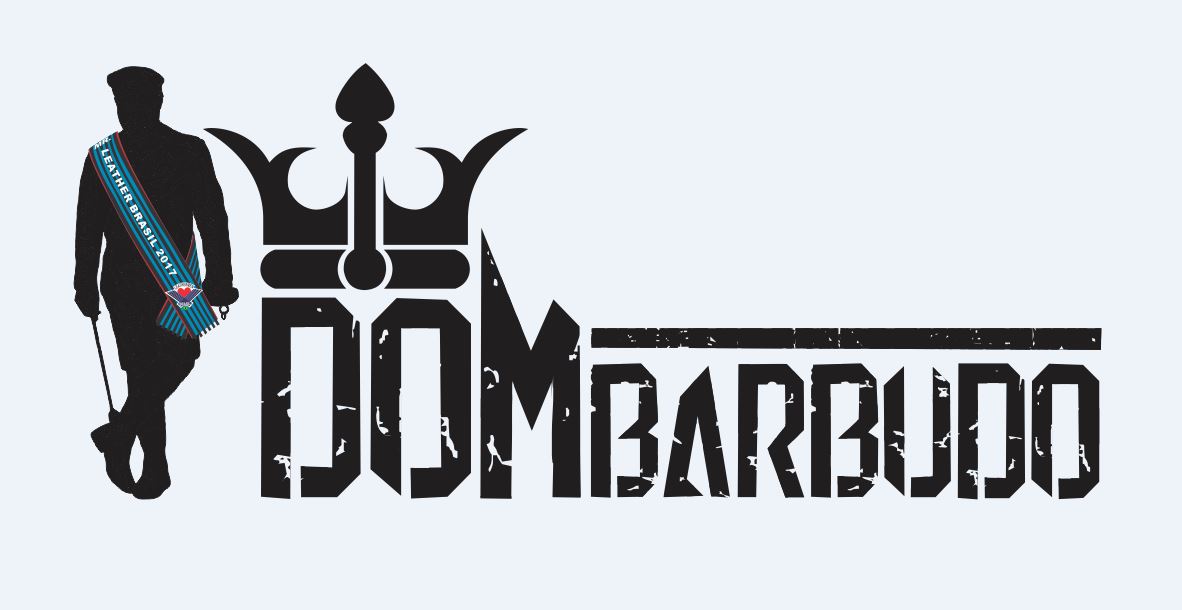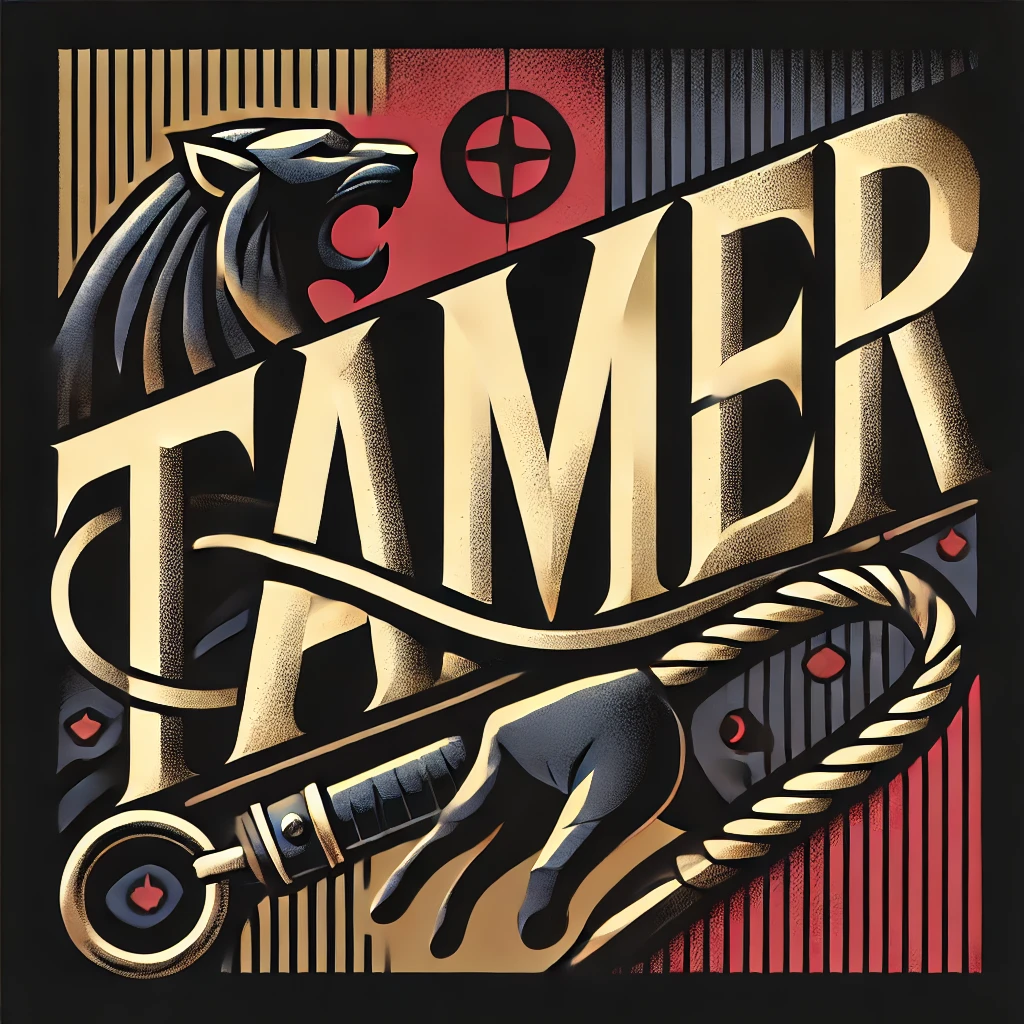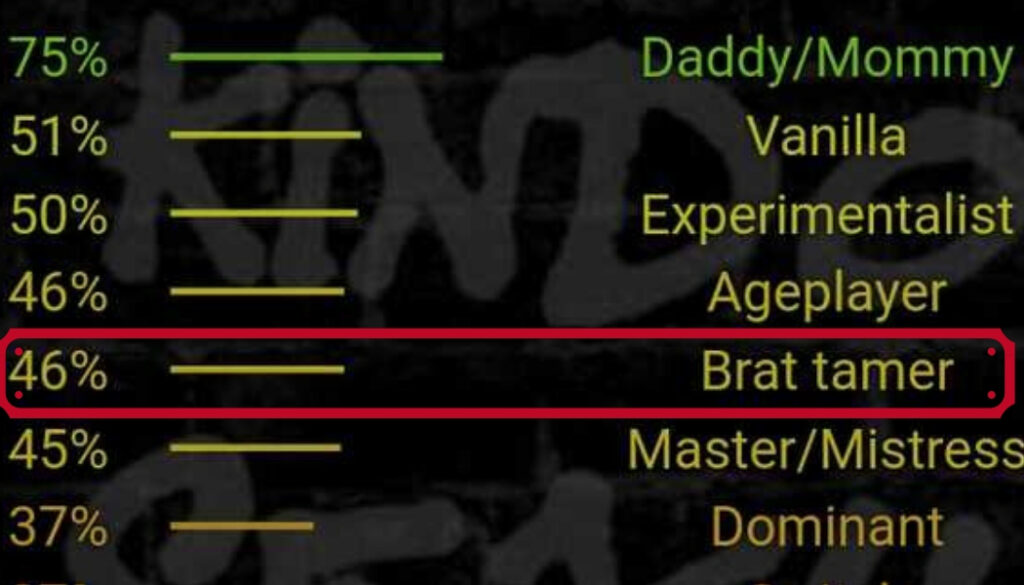📖 TAMER
Categoria: Conceito
🔑 PALAVRAS-RELACIONADAS:
Adestramento, domador, mestre, disciplinador, submissão extrema, controle psicológico, reprogramação comportamental, obediência forçada, autoridade absoluta.
🔠 DEFINIÇÃO:
Figura dominante no BDSM que assume o papel de moldar, disciplinar e treinar o submisso de maneira intensa, muitas vezes utilizando métodos rigorosos de controle e condicionamento.
🔎 SIGNIFICADO:
O Tamer, ou domador, é um tipo específico de dominante que tem como principal objetivo domesticar e refinar o comportamento do submisso. Inspirado no conceito de adestramento e controle absoluto, o tamer aplica técnicas de disciplina severa, reeducação psicológica e imposição de regras rígidas.
Ao contrário de dominadores casuais, o Tamer se dedica a transformar o submisso, moldando sua conduta, postura e mentalidade para se adequar às exigências e expectativas do relacionamento D/s. Esse processo pode envolver humilhação, reforço positivo e negativo, treinamento postural e submissão forçada para fortalecer a devoção e a obediência absoluta do submisso.
🔗 APLICAÇÃO:
Usado em dinâmicas de adestramento de submissos, reprogramação comportamental e treinamentos de submissão a longo prazo, exigindo comprometimento e disciplina por ambas as partes.
🧠 IMPACTO MENTAL, FÍSICO E EMOCIONAL:
Mentalmente, desafia o submisso a reestruturar seu pensamento e aceitação da submissão. Fisicamente, pode incluir posturas fixas, resistência corporal e sessões punitivas para reforçar o aprendizado. Emocionalmente, aprofunda a conexão entre dominador e submisso, fortalecendo o laço de entrega e submissão.
📢 RELAÇÃO COM OUTROS TERMOS:
Treinamento de submissos, condicionamento psicológico, dominação severa, imposição de regras, adestramento erótico, disciplina rígida.
🔒 SIMBOLOGIA E REPRESENTAÇÃO NO BDSM:
O Tamer simboliza o domínio absoluto sobre o submisso, sendo uma figura de autoridade máxima que dita regras, controla impulsos e aperfeiçoa a submissão por meio do rigor e da repetição.
🤝 NEGOCIAÇÃO:
A negociação deve definir níveis de disciplina, métodos de treinamento aceitáveis e limites rígidos para garantir que o processo seja intenso, mas dentro dos parâmetros de segurança e consentimento.
💊 CUIDADOS ANTES E DEPOIS:
Antes da prática, é essencial que o submisso esteja preparado psicologicamente para o treinamento. Após as sessões, o aftercare deve oferecer apoio emocional e reforçar a conexão entre dominante e submisso, garantindo que a experiência seja produtiva e saudável.
🚀 IMPACTO FINAL:
O Tamer não apenas domina, mas molda e transforma o submisso, criando uma submissão mais refinada, disciplinada e inabalável, elevando a relação D/s a um nível mais profundo e estruturado.
🔍 6 PERGUNTAS COMPLEMENTARES – TAMER / DOMADOR
1. Qual a diferença entre ser um Dominador e ser um verdadeiro Domador?
O Dominador comanda. O Domador molda. Um impõe ordens. O outro esculpe comportamentos. O Domador enxerga o potencial bruto no submisso e trabalha cada detalhe — postura, olhar, tempo de resposta, disciplina mental. É mais do que dar comandos: é adestrar até a obediência virar instinto.
2. Que tipo de submisso é mais atraído pela figura do Domador?
Aquele que precisa ser quebrado antes de ser usado. O submisso rebelde, indomado, teimoso ou inexperiente, que carrega resistência, medo ou arrogância — mas que, no fundo, deseja alguém que o domine de verdade. É esse tipo que treme ao ver o Domador chegar com firmeza e olhar clínico.
3. Como o Domador usa o tempo como ferramenta de controle psicológico?
Ele não tem pressa. O tempo é parte do treino. Silêncios longos, pausas entre comandos, castigos cronometrados. O Domador ensina que o submisso não controla mais nem o próprio relógio. Cada segundo de espera vira submissão. Cada minuto de contenção, mais um prego na jaula mental.
4. Qual a importância de criar rituais fixos no processo de domar um submisso?
Rituais são repetição com propósito. Ensinar a ajoelhar do mesmo jeito, responder com as mesmas palavras, vestir o que for mandado. Isso grava a hierarquia no corpo. O submisso para de pensar — ele executa. Não por medo, mas porque foi bem treinado. O ritual vira rotina. A rotina vira posse.
5. Quais são os principais erros que impedem um Dominador de se tornar um Domador?
Falta de paciência, constância e método. Um Domador não age por impulso — ele cria processo. Não grita para ser ouvido, não bate para se impor. Ele faz o submisso desejar ser moldado. Quem não tem controle sobre si mesmo, nunca vai ter controle real sobre outro.
6. Um Domador pode criar submissos diferentes ou sempre molda todos do mesmo jeito?
Ele adapta a técnica, mas nunca a autoridade. Um Domador de verdade lê o material que tem nas mãos: se é bruto, lapida com firmeza; se é frágil, molda com pressão precisa. O objetivo é o mesmo: criar um submisso que não obedece por medo, mas por devoção. Cada um à sua maneira — mas todos domados.

📖 TAMER
Category: Concept
🔑 RELATED WORDS:
training, tamer, master, disciplinarian, extreme submission, psychological control, behavioral reprogramming, enforced obedience, absolute authority.
🔠 DEFINITION:
A dominant figure in BDSM who assumes the role of shaping, disciplining, and training the submissive intensely, often using strict methods of control and conditioning.
🔎 MEANING:
The Tamer is a specific type of dominant whose primary goal is to tame and refine the submissive’s behavior. Inspired by the concept of training and absolute control, the tamer applies severe discipline techniques, psychological reprogramming, and strict rule enforcement.
Unlike casual dominants, the Tamer is dedicated to transforming the submissive, molding their conduct, posture, and mindset to fit the demands and expectations of the D/s relationship. This process may involve humiliation, positive and negative reinforcement, posture training, and enforced submission to strengthen devotion and absolute obedience.
🔗 APPLICATION:
Used in submissive training dynamics, behavioral reprogramming, and long-term submission conditioning, requiring commitment and discipline from both parties.
🧠 MENTAL, PHYSICAL, AND EMOTIONAL IMPACT:
Mentally, it challenges the submissive to restructure their thinking and acceptance of submission. Physically, it may involve fixed postures, endurance training, and punitive sessions to reinforce learning. Emotionally, it deepens the connection between dominant and submissive, strengthening the bond of surrender and devotion.
📢 CONNECTION WITH OTHER TERMS:
Submissive training, psychological conditioning, strict domination, rule enforcement, erotic training, rigid discipline.
🔒 SYMBOLISM AND REPRESENTATION IN BDSM:
The Tamer symbolizes absolute dominance over the submissive, being a figure of ultimate authority who dictates rules, controls impulses, and perfects submission through rigor and repetition.
🤝 NEGOTIATION:
Negotiation should define levels of discipline, acceptable training methods, and strict limits to ensure the process is intense yet within safe and consensual boundaries.
💊 PRE AND POST-CARE
Before the practice, it is essential that the submissive is psychologically prepared for training. After the sessions, aftercare should provide emotional support and reinforce the connection between dominant and submissive, ensuring the experience remains productive and healthy.
🚀 FINAL IMPACT:
The Tamer does not simply dominate but molds and transforms the submissive, creating a more refined, disciplined, and unwavering submission, elevating the D/s relationship to a deeper and more structured level.
🔍 6 COMPLEMENTARY QUESTIONS – TAMER / DOMADOR
1. What’s the difference between being a Dominant and being a true Tamer?
A Dominant gives orders. A Tamer reshapes behavior. One demands obedience. The other teaches it until it becomes instinct. A Tamer sees raw potential in a submissive and refines it — posture, tone, mindset, response timing. It’s more than giving commands; it’s sculpting submission from the inside out.
2. What kind of submissive is most drawn to the figure of a Tamer?
The one who needs to be broken before being used. The rebellious type. The defiant. The uncertain or arrogant beginner. Deep down, they crave someone strong enough to crush their ego and train them properly. They get hard just hearing firm footsteps and that cold, evaluating look.
3. How does a Tamer use time as a tool for psychological control?
He makes time submit too. Long silences, deliberate pauses, timed punishments. The Tamer teaches the submissive they no longer control the clock — he does. Every second of waiting is a lesson in patience. Every prolonged moment of silence is another nail in the mental cage. Time bends to him, and so does the sub.
4. Why are fixed rituals essential in the taming process?
Rituals aren’t repetition — they’re reinforcement. Kneel the same way. Speak the same phrases. Dress as instructed. The body learns what the mind resists. The submissive stops thinking and starts executing. Ritual becomes habit. Habit becomes ownership. That’s not routine — that’s domination by design.
5. What are the most common mistakes that prevent a Dominant from becoming a real Tamer?
Lack of patience. Inconsistency. No system. A Tamer doesn’t act on emotion — he builds structure. He doesn’t shout to be obeyed. He doesn’t hit to assert power. He creates desire to be controlled. A man who can’t command himself will never truly tame another.
6. Can a Tamer shape different types of submissives, or does he train everyone the same way?
He adjusts the method, never the authority. A true Tamer studies the submissive in front of him. If he’s wild, he’s broken slowly. If he’s delicate, he’s pressed firmly but precisely. The goal is always the same: create a submissive who obeys not out of fear — but because being tamed by you feels better than freedom ever did.









